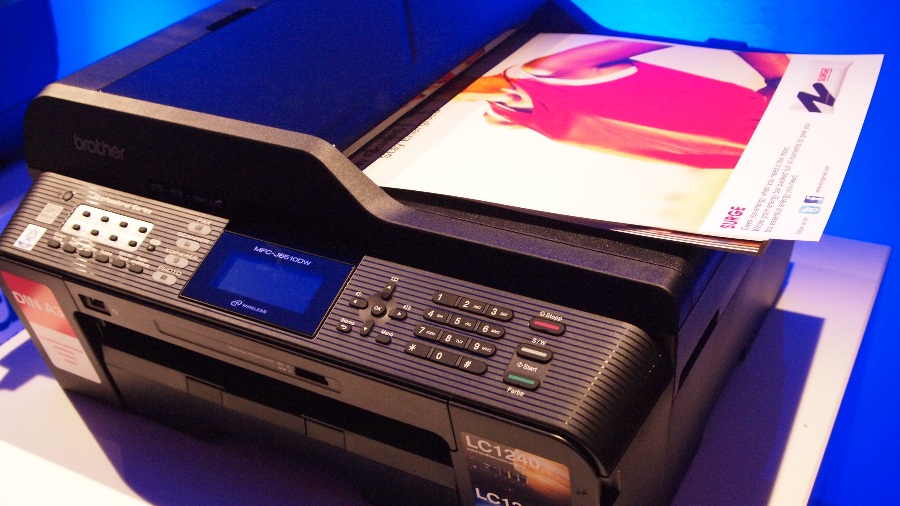How to set up and manage network printing
Setting up and managing network printing

Being able to print reliably and efficiently is often taken for granted in business today, however many businesses are not getting the most from their printers and are often paying more than they should for their print.
There are many reasons why businesses don't get value for money from print, including; failing to understand document workflow, the choice of network printer, and a failure to understand the complex document management journey that could include a number of devices from mobile communications platforms such as tablet PCs, to desktop clients and even cloud-based applications.
To ensure your enterprises print capability is optimised, you need to carefully consider how print fits into your document management workflow and how print works within your business network and then customising your network for your business' specific needs.
When specifying new print equipment for a network, there are a number of factors that need to be taken into account:
- The daily throughput of the printer needs to be carefully assessed. In a network environment, domestic printers will not be robust enough.
- Does the performance of the printer match the needs of its users? An audit of the print requirements in your company may reveal some surprising statistics.
- Is colour capability required? If so, to what level of quality? Photo and general colour output are not the same.
- What is the life expectancy of the printer? What are the costs for consumable? What are the running costs of the printer? Look at the total cost of ownership before you buy.
- Should your business lease or purchase outright the printers it needs? If leasing, then look closely at maintenance contracts, which should be supported with a detailed service level agreement.
These are the basic components that will form your business' buying decision. However, as your printers will be used on a network, there are a number of other considerations to make.
Matching network speeds to your printing needs
The performance of the printers on your network can be dramatically affected by a number of factors: The processor the printer is using. The amount of internal memory it has onboard, and the type of network connections it has available. It is also important to look at the speed of your business' existing Ethernet system and match this to the printer connected to it.
If you try and send data over a 100 Mbps Ethernet network, but the printer can't accept data at this speed, dramatic bottlenecks are likely to occur, which will slow your entire network down. And if your business is about to upgrade its LAN, don't forget to factor in the printers you have or plan to attach to this.
Sign up for breaking news, reviews, opinion, top tech deals, and more.
Managing the print loads that move over your business' network is also important to get right. The print management systems in place should be intelligent enough to be able to move smaller print jobs to other printers if a preferred printer is completing a large job, as this will avoid queuing. By the same token, printers with specific capabilities such as larger paper formats, should be easy to choose by the user, or automatically routed by the print management software.
In addition, network printers also need to have their throughput monitored. This is to not only to track the printer's servicing intervals, but also so costs can be accurately tracked. Networked printers should be able to poll their print data, which can be collected and analysed as part of your businesses cost management. In many cases, printer management can be part of the CAFM (Computer Aided Facilities Management) application your business may already have in use.
Standalone print management solutions are also available and include:
- PaperCut NG
- HP Web Jetadmin
- Tricerat ScrewDrivers
- Xerox Services Manager
Printer location also needs to be considered, a central printing area with large network printers is convenient for maintenance and will reduce costs, however it will also inconvenience some users. Additionally network administrators need to be kept aware as personnel change locations within your business and as users. If they are not, a user may start a print job, but the job outputs on a printer that used to be close to their old desk, which could be in a completely different part of your business' premises
Another important aspect of the printer's location is the physical environment it will be used within. Normal ambient temperature office environments are suitable for most general printing. But if your business has areas of extreme temperatures, look closely at the operating tolerances of the printers you have on your shortlist.
Printer security
Businesses also need to pay close attention to how wireless devices can now be used with the printers on their networks. The popularity of BYOD (Bring Your Own Device) in the workplace has meant that mobile devices can communicate with new generations of printers wirelessly.
One of the major issues with network printing in the past is the lack of security. Often overlooked, printers have been used by hackers to gain access to business networks. Wireless printing would seem to just aggravate the situation. However, all of the major printer manufacturers are looking at this issue.
HP for instance, has already announced its Wireless Direct Printing that allows a device to make a direct connection with the printer. From a security perspective the mobile device never connects to your business' wider network, and doesn't need a password, which should ensure that the printer connection remains secure.
And if your business prints highly confidential materials, it's possible to use secured network printing that requires a PIN number to be entered before the job is sent to the printer itself. All of the major printer manufacturers have models in their range with this capability, additionally these printers also often have lockable paper trays if your business prints onto special papers.